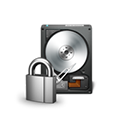SecureCarolina Technologies
The overarching goals of the SecureCarolina technologies are to:
- Determine the risk and impact of compromise by correlating the vulnerabilities present
and amount of sensitive data on each device.
- Prevent unauthorized access to, and disclosure of, sensitive data in transit and at
rest.
- Prevent unauthorized access to business services.
- Increase detection rates of compromise; expedite its eradication and the restoration
of business services and devices.
SecureCarolina Technologies Available for Use
Consult your local systems administrator or SA contact for more information.

DNS Security
DNS Security helps prevent information security incidents by adding threat intelligence
into the DNS translation process. That intelligence prevents adware, malware, botnets,
phishing attacks, and other known bad websites from being accessed.

Endpoint Protection
Microsoft Defender for Endpoint is Microsoft's endpoint security platform that goes far and beyond the traditional anti-malware engine and firewall to protect
against the modern cybersecurity threats an organization faces.

Multifactor Authentication
Many of the largest data breaches begin with a compromised password. Enabling multifactor
authentication (MFA) adds an additional layer of protection to your accounts and the
data you access by making sure a stolen password is not enough to allow access to
data.

Secure File Sharing
Cloud storage and collaboration with others, both internal and external to the organization,
are the norm for today’s workforce. Microsoft’s OneDrive is the University of South
Carolina’s secure solution for both.

System Hardening
Hardening your computer is an important step in the fight to protect university data
and information. This process works to eliminate means of attack by identifying vulnerable
configurations and turning off unneeded services.

Whole Disk Encryption
People are turning more and more to portable devices like laptops for their daily
work, and physical security measures like locked doors no longer provide as much coverage
as they once did. When a device is lost or stolen, the data on it is at risk.






